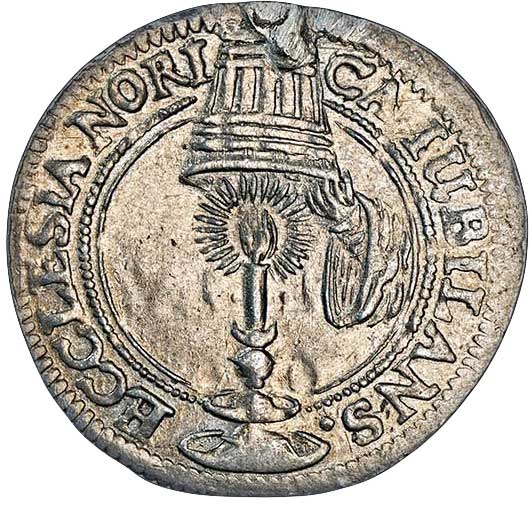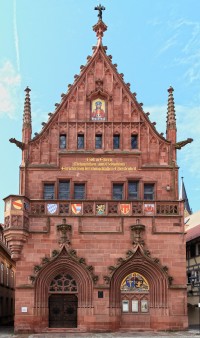Vorderseite: Die von rechts kommende göttliche Hand hebt einen Scheffel von einem brennenden Licht. Umschrift: ECCLESIA NORI – CA IUBILANS (= Die jubilierende Kirche von Nürnberg).
Rückseite: Im Feld in vier Zeilen MARTINVS / LVTHERVS / THEOLOGIÆ / D: (= Martin Luther, Doktor der Theologie, Chronogramm 1617).
en

